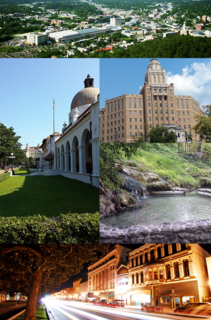
Hot Springs is a resort city in the state of Arkansas and the county seat of Garland County. The city is located in the Ouachita Mountains among the U.S. Interior Highlands, and is set among several natural hot springs for which the city is named. As of the 2020 United States Census, the city had a population of 37,930.

Davidsonville Historic State Park is a 163-acre (66 ha) Arkansas state park in Randolph County, Arkansas in the United States. Situated on a border between The Ozarks and the Arkansas Delta, the park preserves the remains of the abandoned frontier town of Davidsonville. The town was one of Arkansas Territory's first settlements when founded in 1815, serving as an important river port town on the Black River. The former townsite was made into a state park in 1957 and a monument was added to the National Register of Historic Places in 1974.
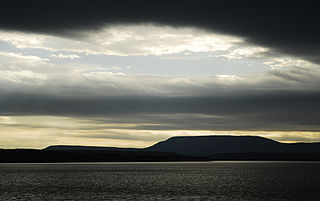
Located near Dardanelle, Arkansas and rising about 1,350 feet (410 m) above the mountain valleys of west-central Arkansas to an elevation of about 1,755 feet (535 m) above sea level, Mount Nebo has views of 34,000 acres (140 km2) Lake Dardanelle, the Arkansas River and the surrounding mountain ridges. Atop this biblically named plateau is Mount Nebo State Park. Developed as a resort area in the late 19th century, it became a state park in 1928, its early development spearheaded by the Civilian Conservation Corps. Park activities include hiking, camping, and other outdoor pursuits.
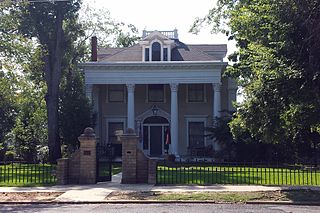
The William H. Martin House is a historic house at 815 Quapaw Avenue in Hot Springs, Arkansas, USA. It was designed by the architect Frank W. Gibb in 1904 and built in the same year. It includes Colonial Revival and Classical Revival architectural elements. It is an imposing building with a two-story Greek temple portico supported by four fluted Corinthian style pillars. The portico's cornice is modillioned with scrolled brackets, and has a band of dentil molding. When built, the house was on the outskirts of Hot Springs.

The Eureka Springs Historic District is a historic district that was listed on the National Register of Historic Places in 1970. Its boundaries are those of the city of Eureka Springs, Arkansas at the time of its listing, specifically augmented in 1979 to include its historic railroad depot. Much of the city was developed between 1880 and 1910, when the area was the center of resort activity taking advantage of the many natural springs in the area. About 20% of the city's buildings were built in the 1890s and have a significant element of either Queen Anne or Second Empire styling, while its commercial buildings tend to have Romanesque and Italianate details. The city is one of the best-preserved turn-of-the-century resort communities in the region.
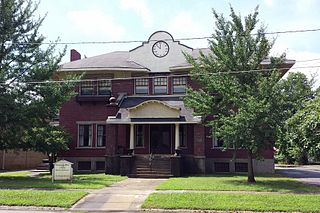
The Elks Club, also known as Community House, is a historic fraternal society clubhouse at 67 West Main Street in Marianna, Arkansas. It is a two-story brick building, built in 1911 by S. A. Keedy, a local contractor. It has an irregular layout, with a two-story main block and a side single-story wing with a porch on its flat roof. The main entry is centered in the two-story block, sheltered by a porch supported by brick posts and Doric columns. It was built for the local chapter of the Benevolent and Protective Order of Elks, who occupied it until financial constraints force its sale in 1934. It was acquired by the city in exchange for the payment of the outstanding mortgage, and was first occupied by the city library, with its second floor ballroom used as a community function space. The space occupied by the library is now used by the local chamber of commerce.

The Bunch-Walton Post No. 22 American Legion Hut is a historic social club meeting hall at 201 Legion Street in Clarksville, Arkansas. It is architecturally unique in the community, built out of native stone in the manner of a Norman castle. It is two stories in height, with rounded projecting corners and a crenellated parapet. Its main entrance is set in a rounded-arch opening at the center of the front facade, and is elevated, with access via flight of stairs. It was built in 1934, and is believed to be the only American Legion hall of this style in the state.

The Middlesex County Courthouse in Urbanna, Virginia was built starting in 1745. It was listed on the National Register of Historic Places (NRHP) in 1976. It has also been known as Old Middlesex County Courthouse and as Middlesex County Woman's Club.

The Woman's Progressive Club is a historic meeting hall at the southwest corner of Rowena Street and Merriman Avenue in Wynne, Arkansas. It is a single story brick structure, with a gable-on-hip roof. It was built in the 1930s with funding from the Works Progress Administration, and is a relatively ornate example of Colonial Revival architecture. The hall, whose interior largely consists of an auditorium with stage, was built for Cross County's oldest social organization, the Woman's Progressive Club, which was founded in 1913. The hall has long been a local venue for public, private, and civic events, and is the finest performance space in the city.

The Silver City Woman's Club is a historic women's club located at 411 Silver Heights Boulevard in Silver City, New Mexico. The club was founded in 1909, and it built its meeting house in 1935–36. Richard Tatsch designed the clubhouse in the Pueblo Revival style, which reflected the region's architectural history. The clubhouse provided two spaces for the club's community activities and private meetings; the former included distributing food to needy families and conducting child welfare inspections on behalf of the state, while the latter included self-improvement courses in music and literature. The women's club has continuously held its activities in the building since its construction; it has also provided a space for community meetings and large events.
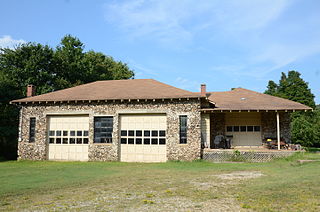
The Aggie Workshop is a historic former school building on Marion County Road 5010 in Bruno, Arkansas. It is a single-story L-shaped structure, built out of local stone and topped by a hip roof with Craftsman-style exposed rafter tails. The WPA-approved building was built in 1935 by the Lincoln Aggie Club and was used as a vocational stone and cement workshop, as part of the local school. A cement swimming pool, contemporaneous to the building's construction, is located in the crook of the L.

The Woodmen of Union Building is a historic commercial building at 501 Malvern Avenue in Hot Springs, Arkansas. It is a four-story structure, built mainly out of brick and ceramic blocks, although its southeastern section has upper levels with wood framing and finishing. Its main facade has an elaborate projecting entrance portico, with the entrance set in an elliptical-arch opening supported by fluted pilasters. The interior retains significant original features, including a bank vault, marble wainscoting, and a 2,500-seat auditorium. It was built in 1923-24 for the Supreme Lodge of the Woodmen of Union, an African-American social organization, which operated it as a multifunction bathhouse, hotel, hospital, bank, and performance venue. It was purchased in 1950 by the National Baptist Association.

The Heber Springs Commercial Historic District encompasses the early commercial heart of Heber Springs, Arkansas. The district extends along Main Street, between Broadway and 6th Street, including several buildings along some of the cross streets. The area was developed beginning in 1881, and grew in the late 19th and early 20th centuries, featuring a diversity of commercial architecture from that period. Prominent buildings include the Cleburne County Courthouse (1914) and the Morton Building at 101 South 3rd Street, the city's oldest surviving commercial building (1895).

Williamson Hall is a historic academic building on the campus of Arkansas Tech University in Russellville, Arkansas. It is located just north of West L Street and west of North El Paso Street. It is a two-story brick building with Colonial Revival features, built in 1940 with funding support from the National Youth Administration. It is distinguished by its Greek temple pavilion on the front facade, supported by six Doric columns. The building was named for Marvin Williamson, who was the first Director of Bands at Arkansas Tech; as well as the first student to enroll at the school. It houses classrooms and faculty offices.
The Liberty Schoolhouse, also known as the Mt. Grove School, is a historic schoolhouse in a remote part of Ozark-St. Francis National Forest in Logan County, Arkansas. It is east of Corley, Arkansas, near the junction of Valentine Spring and Copper Spring Roads. It is a single-story vernacular wood-frame structure, with a gabled roof, weatherboard siding, and a foundation of concrete block piers. It was built in 1897, and was used by the community as both a school and church. It served as a school until 1944, and also hosted civic meetings and social events.
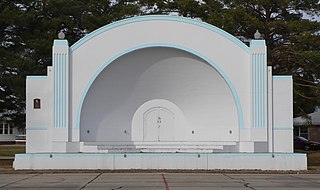
The Athletic Park Band Shell in Plainview, Nebraska was designed and built during 1939 to 1942. Also known as Plainview Band Shell, it was listed on the National Register of Historic Places in 1992.
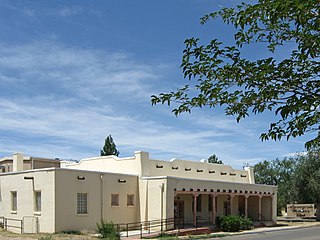
The Alamogordo Woman's Club is a women's club based in New Mexico. It operates under the auspices of the New Mexico Federation of Women's Clubs (NMFWC). The club was created to provide Alamogordo women a way to serve their community. Of note was the Alamogordo Woman's Club's providing books to school libraries.

The Dawson Woman's Club was founded in 1905 as the "Wednesday Afternoon Club" and became a member of the Georgia Federation of Women's Clubs in 1907.

The Tennille Woman's Clubhouse, at 132 Smith St. in Tennille, Georgia, was built in 1922. It was listed on the National Register of Historic Places in 1998.

The Country Woman's Club was founded in the unincorporated community of St. Bethlehem, Tennessee in 1922, as a monthly meeting at one of the member's houses. It expanded to 35 members who eventually moved to meet at the White's Creek Chapel School.





















